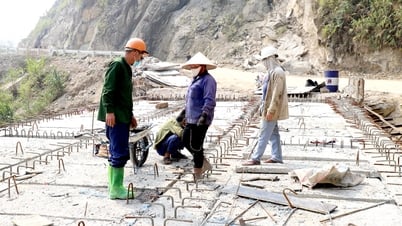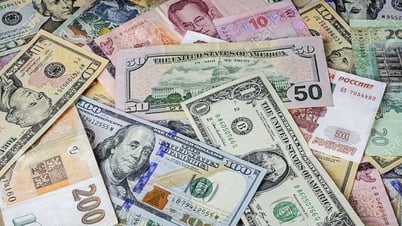Need a “digital brain”
The green credit ecosystem in Vietnam is still operating without data connectivity, in which contact data between banks, environmental agencies and appraisal organizations still has many shortcomings.
Accordingly, data on emission levels, resource consumption, or progress on environmental indicators are mainly reported in writing and there is no standardization of digital data. This makes verifying the “greenness” of projects both slow and unreliable.
At the Green Finance Forum 2024, the leader of the Department of Credit for Economic Sectors (SBV) emphasized: “For green credit to develop sustainably, digital technology is indispensable in appraisal, disbursement and post-audit. Without a digital platform, greenwashing behaviors will become increasingly difficult to control.”
On the other hand, according to a 2023 survey by the Banking Strategy Institute with 34 commercial banks, only 26% of banks have a credit scoring system that integrates ESG factors.
Notably, fewer than 10 banks have a system for collecting and analyzing digital environmental data in real time. At the same time, no bank is connected online to the database on emissions, environmental licensing or environmental impact assessment of the Ministry of Agriculture and Environment .

Green finance expert from IFC - Nguyen Van Loc commented: “A project to build a wastewater treatment plant can receive green loans but in reality, the discharge exceeds the standards. Without digital monitoring, banks and management agencies will not be able to know in advance to take corrective measures.”
Faced with this situation in recent years, banks in Vietnam have stepped up investment in technology to promote digital transformation, improve operational efficiency and customer experience, opening up new opportunities for green credit.
Specifically, the Vietnamese banking industry has spent about VND15,000 billion, equivalent to nearly 15% of revenue, to invest in digital transformation. This investment focuses on developing technologies such as cloud computing, artificial intelligence (AI), Internet of Things (IoT) and big data analysis.
Banks have rolled out digital banking services, allowing customers to perform transactions such as opening accounts, making payments, and taking out loans online. Banks use data analytics to better understand customer behavior and detect fraudulent transactions. Applying automation helps banks increase efficiency and reduce operating costs.
Lack of data connectivity remains a major bottleneck
A financial digital transformation expert at UNDP Vietnam warned: “Without digital environmental data, all green credit actions are like walking in the fog. We cannot make the right decisions with incorrect or missing data.”
In reality, Vietnam does not yet have a digital, open, and interconnected environmental database. Data on emissions, wastewater, land resources, water resources, and air resources are still managed in paper form, which is difficult to access and slow to update.
Accordingly, experts recommend that the implementation of green credit digital transformation is urgent, which can be considered the key to making this capital source transparent and fully exploiting its potential, especially minimizing the situation of "greenwashing".
Specifically, it is necessary to establish a shared system between the State Bank – Ministry of Agriculture and Environment – Ministry of Finance – banks – inspection and auditing agencies. This system will standardize, collect and analyze green data for funding and monitoring purposes.
Issue digital standards for green credit, with special attention paid to standards on emissions, environmental reporting, green project identification, etc., which need to be standardized in digital form. In addition, it is necessary to install sensors, positioning devices, and monitor electricity - water - emissions. Data from these devices must be accessed by banks to update environmental status.
Which banks are investing heavily in digital platforms?
Faced with the need for a “turnaround”, banks are expected to continue investing in new technologies such as artificial intelligence, machine learning and automation to improve service quality and compete effectively in the market.
In particular, AI technology can support the analysis of environmental, social, and governance (ESG) indicators, evaluate loan applications, and forecast emission risks. In addition, Big Data helps collect data from many sources: satellites, environmental sensors, and data from the Ministry of Agriculture and Environment. Environmental sensors located at factories and projects can send real-time data on emission concentrations, water usage, and solid waste. Banking systems or regulatory agencies can receive early warnings when there are violations.
Using technology to record the process of using green capital, sustainable development reports cannot be modified. This helps international investors, auditors or partners to have more confidence in the effectiveness of green loans. In addition, there needs to be a data system connecting banks - the Ministry of Agriculture and Environment - the Ministry of Finance and licensing and environmental appraisal agencies to help synchronize the process, reduce fraud and speed up disbursement.
Some major banks have begun to experiment with applying digital technology in green credit granting, such as: BIDV has deployed the “Green Credit Score” system to evaluate green loan projects according to ESG criteria. Techcombank has invested in an internal data system that combines data from international organizations such as CDP and MSCI to assess environmental records. However, these systems are still on a pilot scale and have not been integrated into the national credit system, leading to data fragmentation and difficulty in replication.
Green credit is only truly “green” when it is based on accurate data, transparent monitoring and quick response. These things cannot be done by traditional manual and paper methods. Digital transformation is not only an option, but also a mandatory path for green credit to develop in the right direction, more transparently and effectively. Digital transformation is an indispensable key to green credit transparency and to limit “greenwashing”./.
Source: https://baodaknong.vn/tin-dung-xanh-bai-6-chuyen-doi-so-chia-khoa-cho-tin-dung-xanh-255113.html































![[Photo] Prime Minister Pham Minh Chinh receives leaders of several Swedish corporations](https://vphoto.vietnam.vn/thumb/1200x675/vietnam/resource/IMAGE/2025/6/14/4437981cf1264434a949b4772f9432b6)






































































Comment (0)